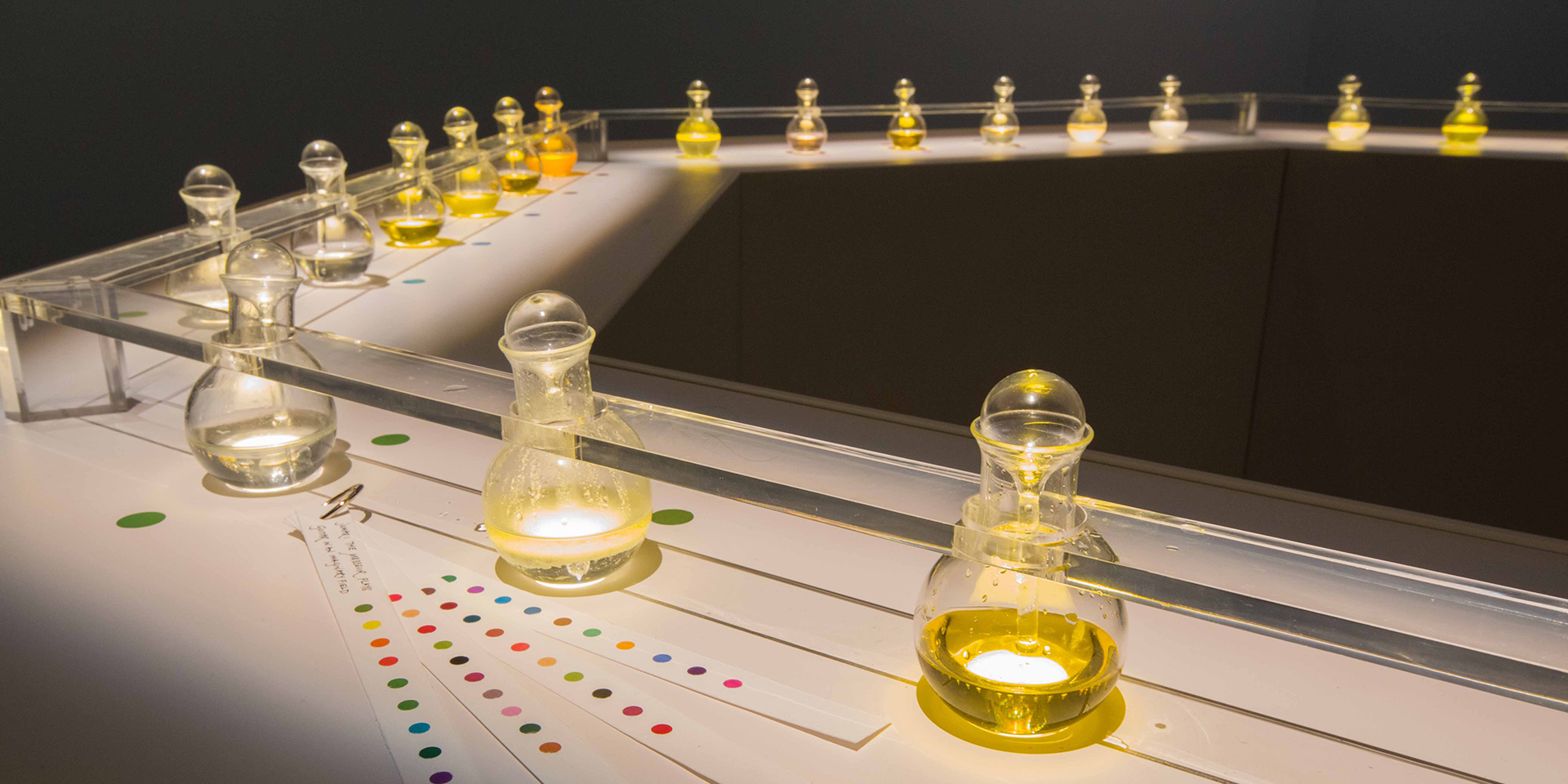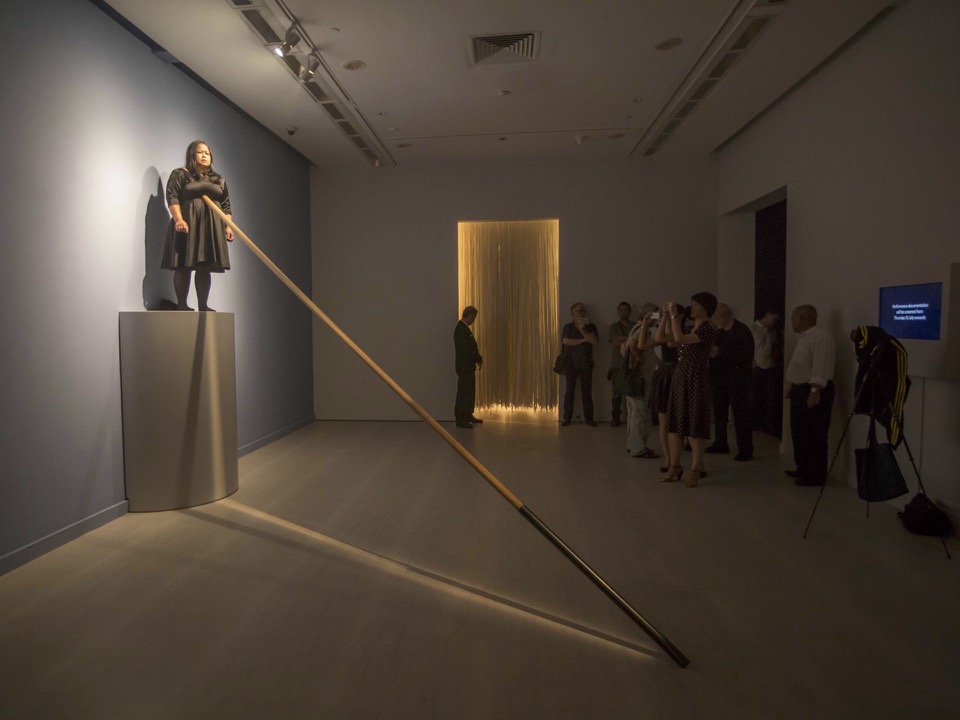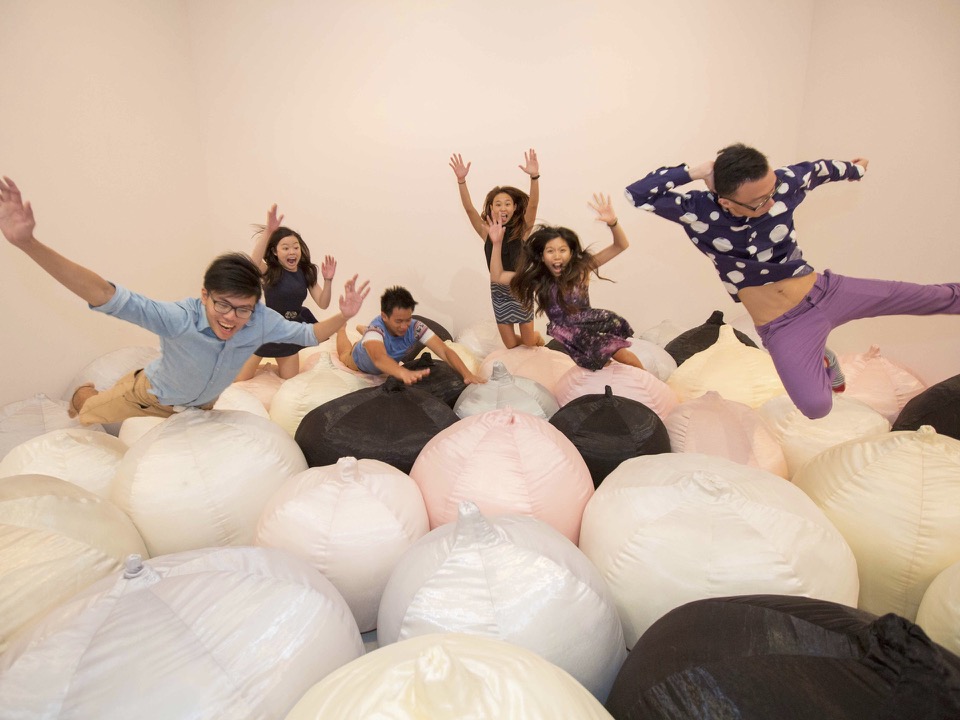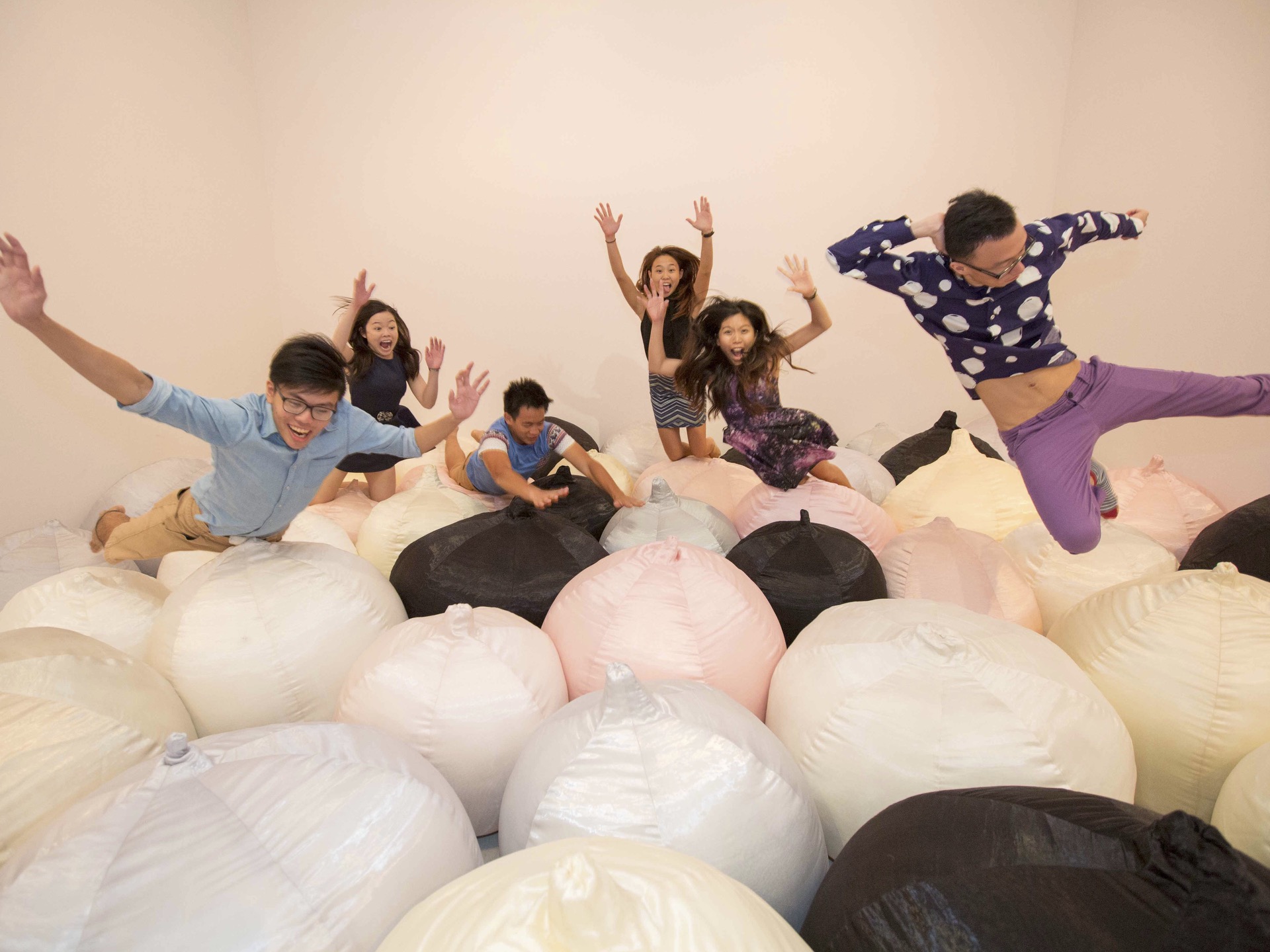Singapore Art Museum
Sensorium 360° is an exhibition of Southeast Asian and Asian contemporary art that calls upon the complexity of the human senses, and explores how sensory experiences locate us in understanding the world and knowing the self. While the five senses of sight, hearing, taste, touch and smell are the most commonly known, other identified senses include the ability to detect movement, pain, balance and even time. Often taken for granted, these physiological capacities are indispensable in enabling us to apprehend the world within and without – taking in its pleasures and pains, even as we absorb data and information.
Spanning the fields of art, phenomenology, philosophy and cognitive psychology, Sensorium 360° is a visual art exhibition that moves beyond vision to 'see' the world through the other senses, and to experience it in-the-round.
Bui Cong Khanh
Chicken Rice in the Border (2014)
Lavender Chang
Unconsciousness: Consciousness (2011 – 2013)
Transcendence (2014)
Tad Ermitaño
Twinning Machine 4.0 (2014)
Li Hui
Cage (2006 – 2014)
Alecia Neo
Unseen: Touch Field (2014)
Goldie Poblador
May Puno sa Dibdib ng Kamatayan (There is a tree in the heart of death) (2014)
Pinaree Sanpitak
noon-nom (2001 – 2002)
Eugene Soh
The Overview Installation (2013 – 2014)
Linda Solay
Continuum of Consciousness (2012)
Melati Suryodarmo
Alé Lino (2003 – 2014)
Mark Wong
Memory Rifts (2014)
highlights
2003 – 2014
durational performance with relics and video documentation
Pain, or physical discomfort, is one of the most acute ways our body registers its physicality, and reminds us of the limits of this mass of flesh, muscle, bones and nerves that we inhabit. In her durational performance, Melati Suryodarmo leans against a 4-metre long pole from a height, its point pressed against her solar plexus. Several different nerves radiate from the solar plexus, and it is considered a dangerous or vulnerable point, particularly in martial arts practices, for a blow there can incapacitate and in some instances, result in immediate death.
Drawing on meditation practices from Javanese ritual traditions, as well as her years of training with butoh and durational performance practitioners, Suryodarmo enters an altered state of consciousness, bringing her body and mind into unified stillness, attempting an emptying-out of the body and hence, a transcendence of pain, discomfort and physicality. The title of this work, Alé Lino, is taken from the Bugis language and refers to the ‘middle world’ inhabited by humans, in between the ‘upper world’ of the heavens and the ‘lower world’ that lies beneath the surface of the earth. On her elevated plinth, Suryodarmo performs an attempt to move beyond materiality and this middle world with a long pole that simultaneously connects her to the earth even as it rests against her solar plexus – considered by many to be the seat of an etheric field and hence, of the transcendent body or self.
2006 – 2014
installation with green iodide lasers and fog machines
Artist Li Hui works with laser beams that sculpt and define the spaces they inhabit, even as they evoke otherworldly dimensions. In Cage, Li uses green lasers to create two virtual cages that appear alternately. The effect of these immaterial beams of light creates an impression of something solidly material, which in turn triggers instinctive responses of disorientation and even anxiety in viewers, who find themselves ‘trapped’ one moment, and standing outside the object of their imprisonment the next. While this work relies on visual and spatial perception for its initial sensorial and psychological impact, it suggests at a philosophical level, the imaginary boundaries that people determine for themselves are almost wholly reliant on perception rather than reality.
2001 – 2002
organza, synthetic fibres, 55 pieces
Filling an entire room, noon-nom invites the visitor to not only touch the artwork, but also be touched, by getting up close and personal with a familiar form that is nurturing, sensual, and sacred: the human female breast. These rotund, soft sculptures covered in organza are part of the Thai artist’s ongoing and extensive body of works across different media and genres. In so doing, she questions prevailing attitudes towards the female breast in order to reassert its significance as a natural form that symbolises nourishment and comfort, as well as signifying the potency of the sensuous and spiritual feminine body.
For babies, suckling the breast provides succor and sustenance; moreover, the physical contact is vital in forging the intimate bond between mother and child. During a baby’s early stages, senses like sight and hearing are not fully developed yet, and haptic communication is one of the most important ways a child receives information about the world. Indeed, the spinothalamic nerve tract – which conveys neurological information to the brain about pain and touch—is amongst the earliest to develop in the human embryo, and newborns are already able to discern differences in the texture, shape and weight of objects.
all resources








